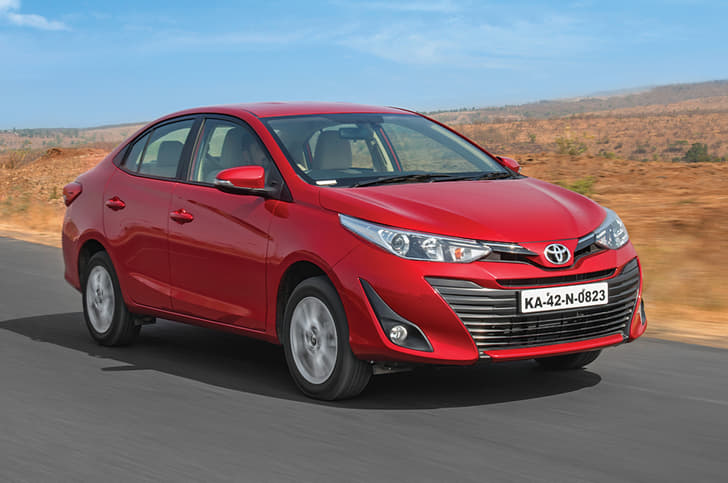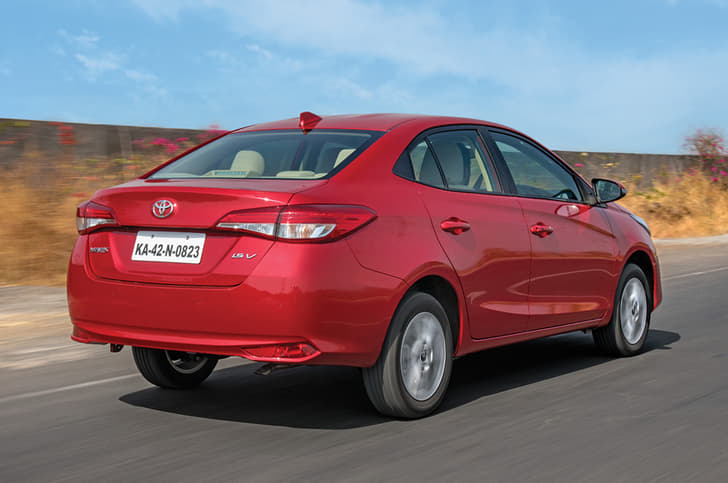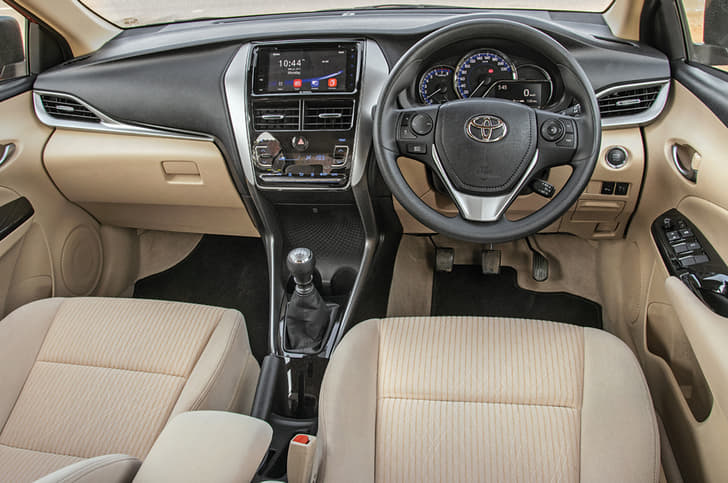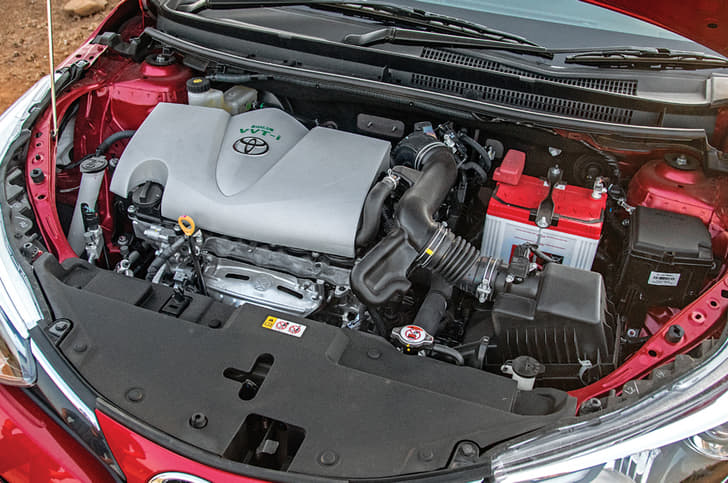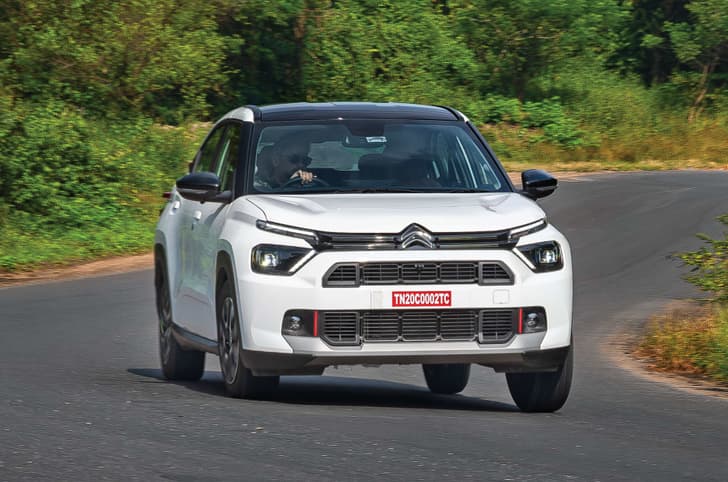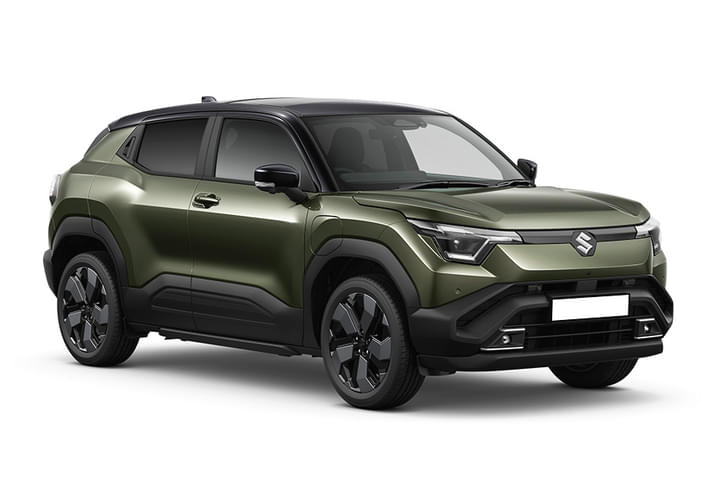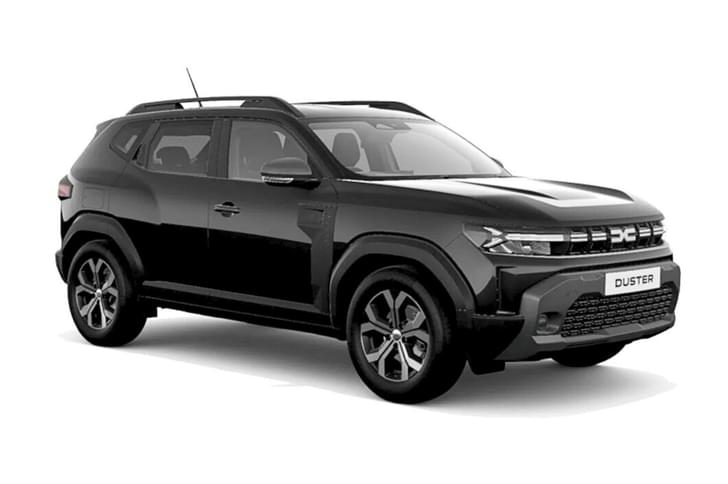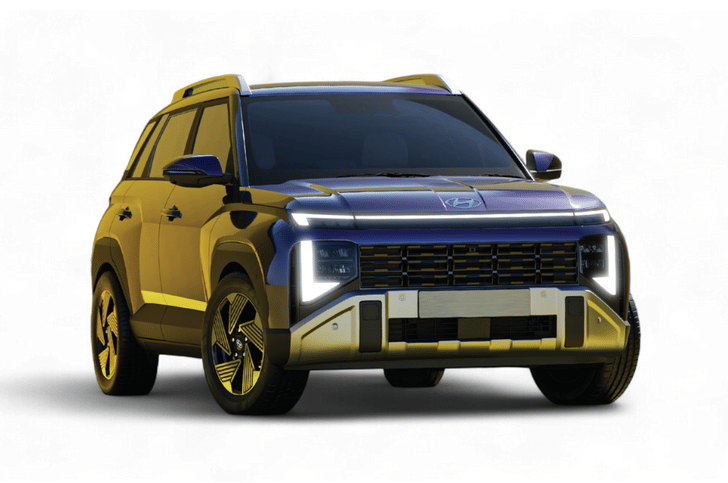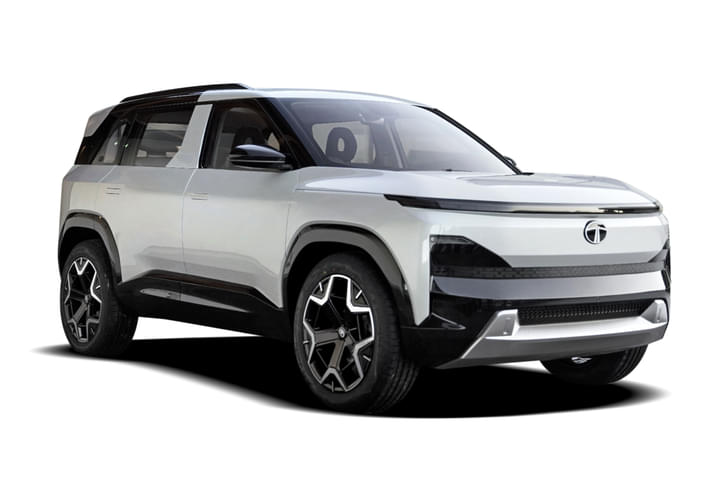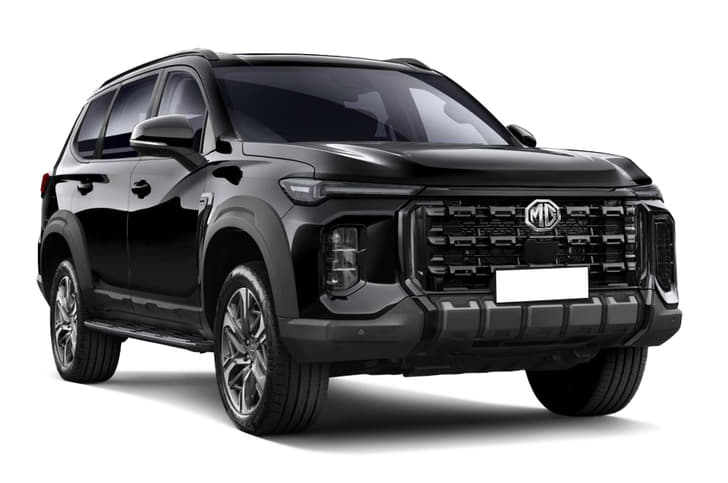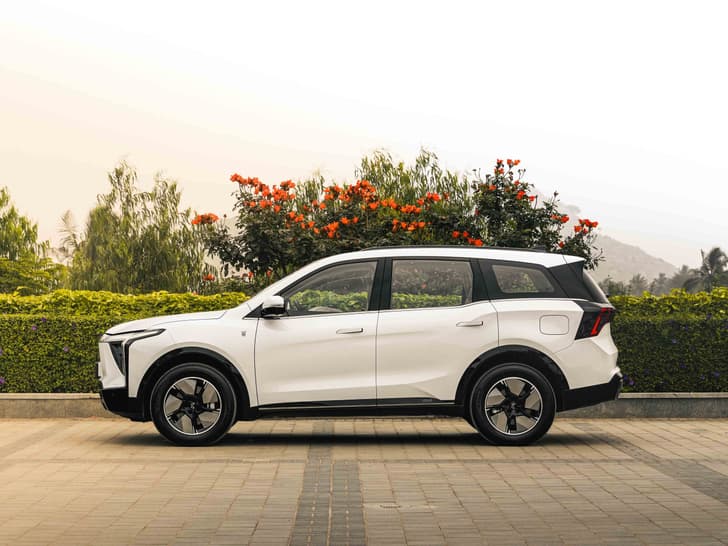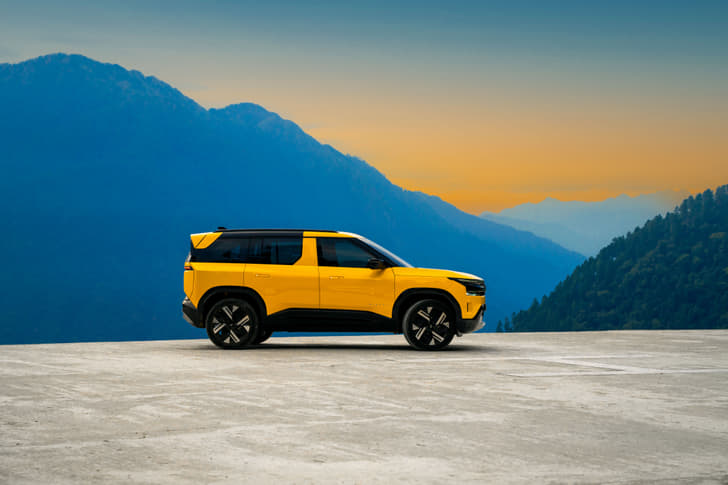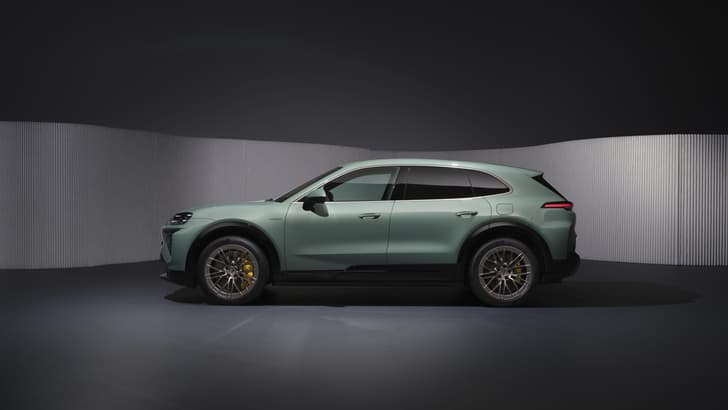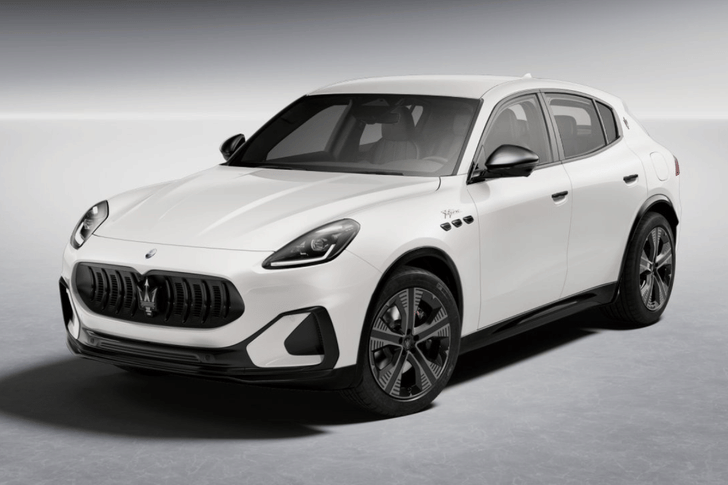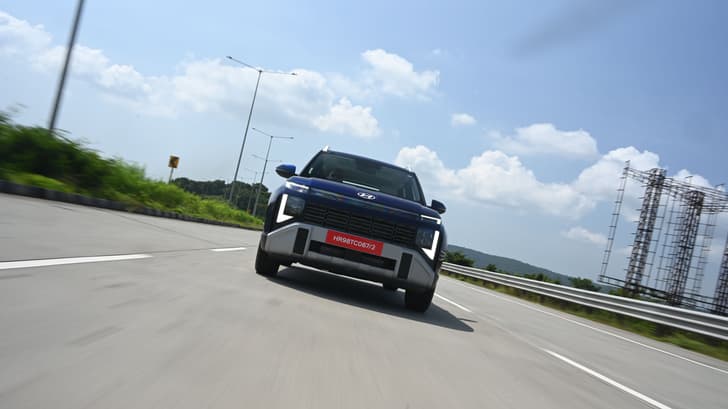Toyota is deemed to give its owners a reliable and trouble-free ownership experience and that’s the biggest reason why many Indians prefer this brand over many other executive ones. However, when the competition is from well-established and proven brands like Maruti, Hyundai and Honda, it all boils down to the core capabilities of the car. The all-new Yaris has entered a very competitive space and to make it stand out from the crowd, Toyota has given the third-gen model class-leading safety kit like ESP, hill launch assist, traction control, and all-wheel disc brakes. Seven airbags and ABS with EBD is offered on all variants.
It also gets a laundry list of features, many of which are segment-firsts. Powering the Yaris is a 1.5-litre petrol engine, available with either a six-speed manual or CVT. And with prices ranging from Rs 8.75-14.07 lakh, this is the priciest car in its segment. What helps though is that Toyota is offering a three-year/unlimited km warranty, extendable up to seven years. In this exhaustive test, we find out whether it is only peace of mind that buyers are paying for, or is the car worth the asking price.
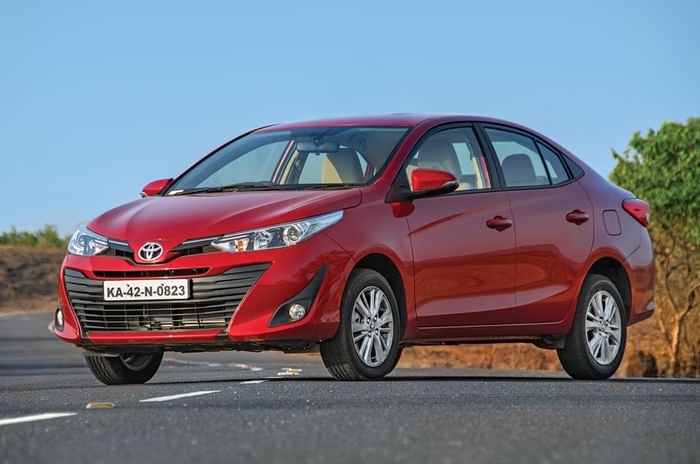
The Yaris is built on the common ‘B platform’ which underpins other global Toyota models as well. This third-gen model was first launched in 2013 in international markets and received a major facelift in 2017, and it is this heavily updated version that we get here. With every generation change, cars usually grow in size – consider the Honda City and Hyundai Verna, presently in their most recent iterations, while the Ciaz was only born in 2014 – and the Yaris, being the oldest of the lot, appears to be a bit smaller than its rivals in length and even has the shortest wheelbase. It weighs 1,120kg (MT), making it heavier than the Ciaz and City, second only to the Verna.
Modern Toyotas like the Innova Crysta and Fortuner sport a bold design language with a lot of flash and sharp styling cues that give them a unique identity. In the Yaris’ case though, the designers have taken a more conventional approach, and while it can’t be called stylish or handsome, the design is best described as safe and functional. It, however, does get adequate distinct design elements, like oversized headlamps and a large trapezoidal front air dam that dominates its face. When you see it in the flesh, you’ll definitely catch a second glance to confirm that the floating body-coloured panel on the air dam’s base doesn’t run along its entire breadth. In the top VX variant, the topmost corners of the air dam get LED DRL strips but they seem like an aftermarket add-on. The horizontal air intake, resembling a letterbox slot, just above the air dam, and the vertical fog lamp housings, both add some character to the Yaris’ face. The bonnet has bold creases and there’s a prominent cut on the doors well. Excessively long overhangs at the front and rear make the car look ungainly from certain angles, and its 15-inch wheels look a size smaller, more so due to the raised ride height of the Indian-spec car. The rear three-fourth profile looks very bulky, and with the tail-lamps stretched too long and the raised bumper height, the styling is very disproportionate. The roof of the Yaris has a wavy design for added rigidity to the structure.
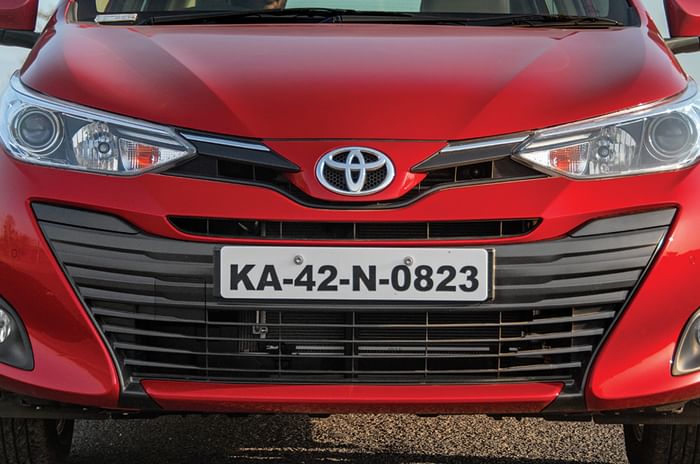
It’s a sea of beige on the inside and that makes the cabin feel bright. The asymmetrical dashboard looks nice and the matte silver highlights lift its appeal. However, there aren’t any soft-touch plastics to speak of and the materials used feel a bit hard, shiny and scratchy. There’s also artificial stitching on the dash and steering to make them appear like they have a layer of leather on them. What’s nice, though, is the dash fascia, which sports a piano-black surface with some premium-looking silver buttons for the climate control. Also, the fascia’s spindle-like shape is very Lexus-like. The instrument dials have large fonts that are easy to read, but the sheer amount of reflection on the angled instrument cluster housing, especially during the day, seriously hampers readability.
The front seats are controlled electrically, which is a segment-first, and offer a good range of adjustments. The seats are wide and accommodative, but fall short in terms of lumbar support, compromising comfort for longer journeys. Also, there are certain ergonomics that could have been executed better. For starters, the front armrest is unusable for shorter drivers as the entire console is placed too far behind and there’s no sliding function on offer either; it can be used as an elbow rest at best, and that too only if the front seat is pushed further back. The steering is placed too close to the dashboard, which makes the absence of telescopic adjustment even more noticeable. Also, the driver footwell is cramped, leaving no space for a dead pedal; even the CVT version misses out on one.
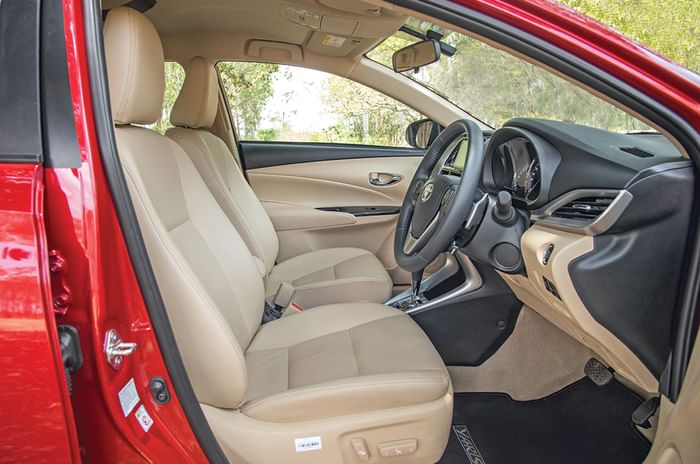
Toyota has added noise and vibration control glass which works well to keep the ambient noises to a minimum. The windscreen is specially designed to keep solar and other harmful rays out. The Yaris’ air con performs well and cools the cabin rapidly. What’s nice is that rear passengers get a roof-mounted blower with a single slat on each side, to channel air effectively; this placement works better than the conventional one in other cars.
The rear seat of the Yaris is comfortable, although the backrest is quite upright. The seat is fairly wide and support is adequate, and while leg- and knee room are sufficient, headroom for taller occupants is tight. In terms of safety, all three passengers seated here get adjustable neck restraints and three-point seat belts. The middle passenger, however, will find the front armrest console to be slightly jutting into the knee room.

In terms of practicality, the Yaris gets a large bottle holder in each door, two cupholders ahead of the gear lever and two in the rear armrest. There’s also a cavity beside the handbrake to store your smartphone (in a horizontal, upright manner), and a cleverly thought-out 12V accessory socket right behind it. And except for one in the audio system, Toyota hasn’t given the Yaris any USB charging slots; there are two 12V sockets for rear passengers beneath the armrest console, though. The divided glovebox is large and comes with a cooling vent, which is useful. The Yaris gets a large 476-litre boot, which is small in terms of volume by class standards, but it’s well-shaped and the 60:40 split folding rear seats (a segment-first) give it a lot of luggage-carrying versatility.
There are four variants on offer and the good news is that all of them get seven airbags (including a driver knee airbag) and ABS with EBD as standard across the range. Even the CVT is available as an option across the range. The top VX variant gets kit like ESP, traction control, all-wheel disc brakes and hill launch assist. In addition to these, the Yaris gets some segment-first features like gesture control for the touchscreen, roof-mounted rear blower with ambient lighting, front parking sensors, 60:40 rear-seat split, a noise and vibration-absorbing glass area and a tyre pressure warning system. Other prominent kit include projector headlamps, 15-inch alloy wheels, keyless entry/go, (part) leather upholstery, auto headlamps, rain-sensing wipers, reversing camera, cruise control and paddleshifters (in CVT). Still, its competitors offer some more desirable features like a sunroof, LED headlamps and cooled seats, all of which aren’t available on the Yaris.
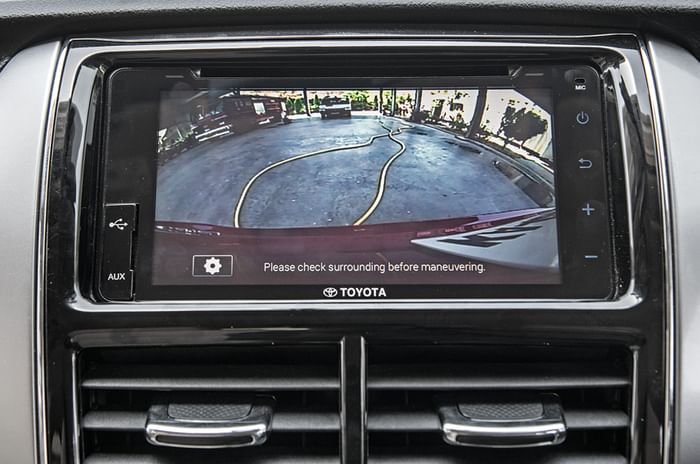
The Yaris is powered by the same 2NR FE 1,496cc, four-cylinder petrol engine as the Etios, but in a heavily re-worked guise, and, as a result, power and torque have been bumped up to 107hp at 6,000rpm and 140Nm at 4,200rpm. This engine responds best to part-throttle inputs at low revs, and as a daily driver in peak traffic, it does the job in a smooth and efficient way. But if you’re ambling in higher gears and need to get through that amber light before it turns red, you will have to downshift. This is not a motor that likes to be hurried and the weak mid-range translates to a flat power delivery. Its usable power lies at higher revs, so it needs to be spun beyond 3,500rpm to get moving and complete overtaking manoeuvres quickly. There’s a prominent spike in performance at 5,800rpm, and it’s in the last 500 revs that the engine feels most aggressive, before the fuel is cut-off rather abruptly.
Toyota has given the Yaris a taller third and fourth gear, which reflects in its in-gear acceleration timings; it takes 14.74sec and 20.43sec to accelerate from 20-80kph in third and 40-100kph in fourth gear, respectively – significantly slower than the Ciaz (11.32, 16.20sec), Verna (11.71, 15.56sec) and City (12.82, 17.22sec). Even flat-out performance is quite mediocre, with the Yaris manual taking 12.39sec to accelerate to 100kph from a standstill; that’s over 2sec slower than the segment benchmark – Honda City, and slower than other rivals too. The six-speed manual gearbox is superbly smooth to use with nice and short throws; it slots in easily too. The clutch has a nice, positive bite and a short travel, which makes it easy to operate.
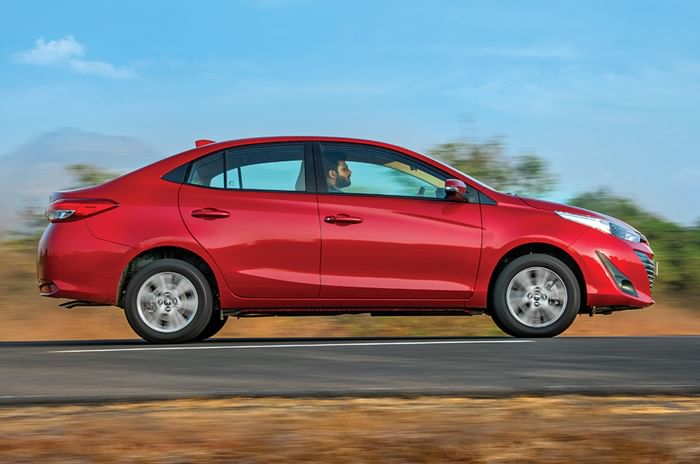
The seven-step CVT works very smoothly; it makes driving effortless, highlighting the relaxed nature of the engine rather well, especially when driven with a light foot. Yes, it does have the rubber-band effect associated with CVTs when you floor the accelerator. However, on most occasions and with part-throttle inputs, it shifts seamlessly and is one of the smoother automatics in this segment. There are paddleshifters too; they respond obediently and are particularly useful when you want to slow down using gearbox for ‘engine braking’.
The brake pedal is a bit too sensitive (especially in the manual); even with just a tap, it’s as if you’ve hit the pedal hard. Braking performance, however, is superb, with the ventilated discs up front and
solid discs at the rear shedding speed rapidly.
For India, the Yaris’ suspension has been reworked. The dampers have been stiffened and the springs are taller, making this car more suited to tackle our road conditions. There’s a hint of firmness in the way it drives, but it swallows potholes and broken road with great maturity; this isn’t a car that needs to be slowed down on a set of rumble strips – it’ll simply glide over without tossing passengers around and without surface imperfections thudding through. Ground clearance is generous too, and the Yaris tackles formidable speed breakers with ease. Body movements are well controlled and even as speeds increase, the Yaris remains flat and composed. Ride quality is, in fact, one of its strengths.
Drive it in an enthusiastic manner on a winding section of road and its grip levels impress. And it isn’t merely the 185mm tyres, but even its mechanical grip – as a result of the suspension set-up and weight balance – really stands out. The handling remains predictable and the car doesn’t protest when thrown into a corner. The steering isn’t very light at low speeds and even as the car gains momentum, there’s an artificial heft to it. The lack of feel or feedback, however, means it won’t please those who enjoy driving.
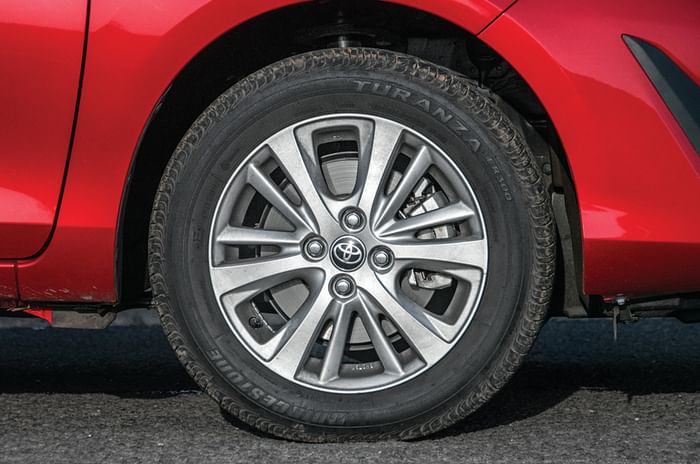
In our test cycles, the Yaris manual achieved 9.96kpl in the city and 16.4kpl on the highway. The third and fourth gear ratios are slightly tall. The CVT managed 9.11kpl in the city and 16kpl on the highway, which is quite a respectable figure; but it’s nowhere close to the claimed 17.8kpl figure.
Three variants get a 7.0-inch touchscreen. While the top-spec VX gets a slightly different unit, what’s common among them is that the display is hard to read, especially in daylight. The colours on the screen aren’t rich and the graphics aren’t sharp.
The talking point here is gesture control. It’s a cool party trick but isn’t very intuitive. Also, there’s no knob for the volume. To insert a CD/DVD, the system folds open (facing upwards), and because there’s no physical button to slot it back in, you end up tapping the screen randomly to get it to its original position.
While navigation is present only in the VX, Miracast is part of even the lower G and V. Using this, you can mirror (and control) your phone on to the car’s screen via Bluetooth; it works flawlessly. Android Auto and Apple CarPlay don’t make it to the equipment list.
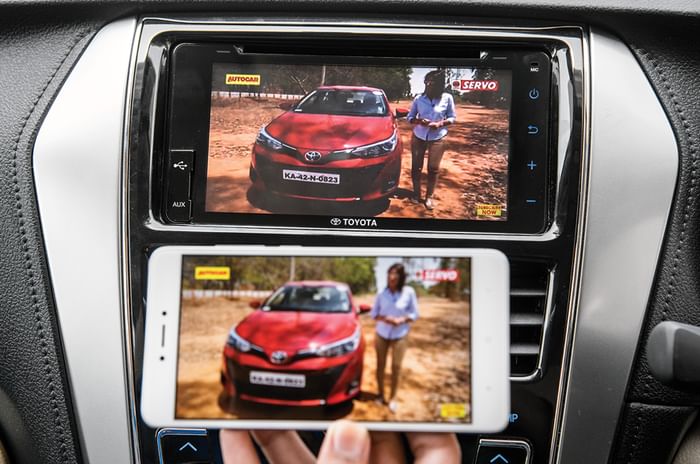
The Yaris comes across as a well-put-together car that promises to be dependable and trouble-free like most Toyotas are. It, however, lacks the emotional quotient of its rivals, be it in terms of design and styling or the way it drives. Performance is lacklustre and the benign but neutral handling won’t thrill keen drivers either. Where the Yaris scores is in the safe and predictable way it goes about its job. Ride comfort is one of its key strengths and even at highway speeds, the Yaris feels very secure and stable. Toyota must be applauded for taking the lead when it comes to safety. The Yaris gets best-in-class safety features, which includes seven airbags, ESP and hill launch assist, earning it a 5-star rating in the ASEAN NCAP crash test, for which we’ve given it an extra star. It also gets many segment-firsts like the roof-mounted rear blower, gesture control and front parking sensors. However, it misses out on some key features its rivals offer like cooled seats, a sunroof and LED headlamps.
Overall, the Yaris is not an exciting car to own, and the premium pricing, especially for the higher variants, doesn’t make it fantastic value either. However, Toyota is banking on the lure of its badge and the peace of mind associated with the brand. But as a product, the Yaris falls short in many areas and Toyota should have offered more to entice buyers.

